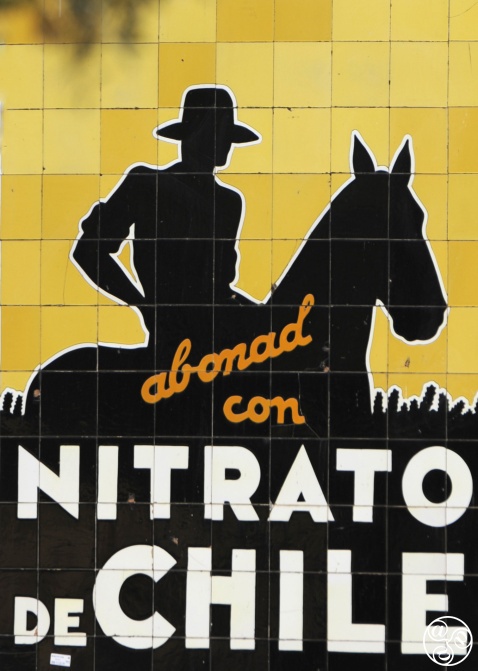
The famous ceramic tiled advert for Nitrado de Chile in Almonaster la Real |
|
Nitrato de Chile - Nitrate of Chile
By Chris Chaplow
Much has been written about the Osborne bulls, large black sherry advertisements which you may well have seen by the roadside all around Spain. Another, less well-known but equally classic, advertisement that has become a historic and cultural element is "Nitrato de Chile".
What is Nitrato de Chile?
Professional car hire services at Malaga airport. All-inclusive prices, book your car online and pay on arrival - without cancellation fees!
In the late 19th and early 20th century, Chile had an abundant supply of a precious chemical: commonly known as white gold or Chile saltpeter, its technical name was sodium nitrate. This extremely valuable commodity was used as both fertilizer and explosive, and its high value led to the 1879-83 War of the Pacific or "Saltpeter War". This conflict saw Chile, Peru and Bolivia fight over territory in the Atacama desert containing the mineral. In the outcome, Chile won much of the disputed territory.
In 1909 two German scientists, Fritz Haber and Carl Bosch, worked out how to produce nitrogen chemically - in other words, how to artificially make white gold on an industrial level.
In the years that followed, advertising for thi snatural nitrate became increasingly important for the economic survival of the Chilean company whose product was Nitrato de Chile. In the early 1930s, Nitrato de Chile advertisements were made from ceramic tiles.
Advertising was in its infancy and the nitrate company placed thousands of the tile panels around rural Spain, often on the first house you pass when entering a village, the casilla de peones camineros (road workers' house), and on warehouses. They were carefully placed in both strategic and beautiful locations.
Who created the Nitrato de Chile advertising image?
The image's designer was Adolfo López-Durán Lozano, from Madrid. While he was studying architecture, Lopez-Duran was asked to paint the advertisement by one of his teachers, who presumably had a connection with the Chilean nitrate company. What began as a kind gesture to support a student's financial situation ended up as being one of the most popular artistic icons of mid-20th century Spain.
It is a simple design - a black silhouette of a man wearing a sombrero and a shirt with the sleeves rolled up, riding a horse through tall vegetation against a yellow (exotic) background. Note the thin white line which frames the image. The words "Nitrato de Chile" sit at the bottom of the panel.
The design was used right across all types of packaging and advertising - see this original hessian sack of Nitrato de Chile.
Thankfully, due to the high quality workmanship on the ceramics, some still survive 85 years later, on the exterior of buildings. We estimate that about 10 of these ceramic tile panels still remain in Andalucia, with more in Extremadura and other parts of rural Spain.
List of surviving 'Nitrato de Chile' ceramic advertisements.
Andujar.
Located on an old building in the centre of the Andujar (Jaen), at the junction of the main Avenida de Andalucia and Calle Tercia. It is a fine preserved example. More >
Almonaster la Real
Located on an old farm building outside the village of Almonaster la Real, Sierra de Aracena, (Huelva). More >
Montefrio
Located in the village on a private building strategically placed oposite old stone Pósito (granary) and now a Casa de la Cultura at the junction of Calle Alta and Plaza de Posito. More >
Berja
Located in the village of Berja in Almeria on the facade of an old fertiliser store alongside other interesting historic tiiled. Calle Faura 18. More >
Fernan Nuñez
Located in the small town of Fernan Nñmnez in south of Cordoba province on the end wall of a house facing traffic entering the village from the north. Avenida Juan Carlos I, 8. More >
Thanks to Ron Conijn for help with this list. Please help us list these classic ads by sending a photo and GPS location to [email protected]
